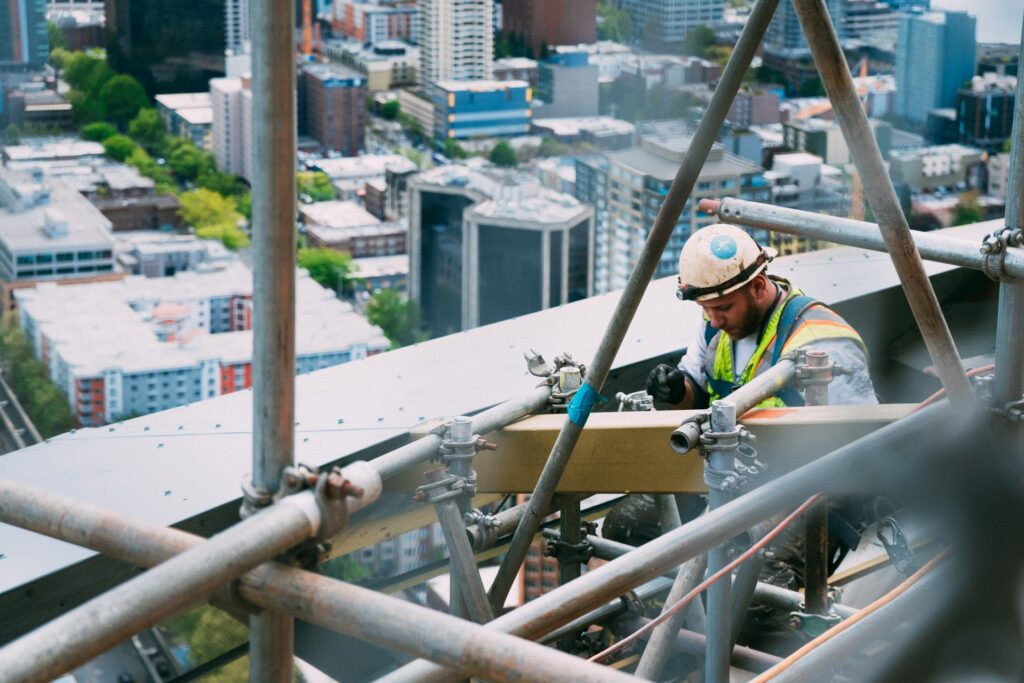Latent vs Patent Defects

In the construction industry, the integrity of a building or structure is paramount, not only for its longevity but also for the safety of its occupants. For those involved in the construction and build environment there is much to consider- from materials, installation requirements, design and of course cost considerations, to legal contract complexities that can be bewildering. We understand this.
Entering into construction contracts can create liabilities that you have complete, some or no awareness of, especially regarding defects, and particularly latent and patent defects. Understanding your legal position can be critical for all parties involved in a project, especially where something has, or might be, going wrong.
Defects, each unique in characteristics and impact, can significantly affect buildings’ operational quality, aesthetic value, and structural safety. The question of fault for defects can turn any project or contract into a legal and commercial nightmare.
If you have any questions regarding your construction contract or project our specialist construction team will be happy to assist you. We specialise in construction adjudications and litigation, with experience dealing with most forms of standard contract such as the JCT suite of documents. Whether a small project, medium size development or major infrastructure works, if you are encountering delays, problems or allegations are being made, our construction litigation team would love to hear from you. We act in construction disputes across the country.
What Is the Difference Between Latent & Patent Defects?
Latent Defects
Latent defects are hidden flaws in buildings that might not be immediately obvious. These issues may lie dormant for years before manifesting, often complicating liability and remedial works. Latent defects can result from various factors, including design failures, material deficiencies, or substandard workmanship.
Latent defects are particularly difficult because they can lead to significant damage and require extensive repairs once they surface. These hidden problems can arise during any phase of the construction process, from design and material procurement to the actual build or after practical completion and handover.
Taking a proactive stance on minimising these latent defects can involve various techniques. Increasingly technology; tracking software and ongoing monitoring play a role in larger projects helping the team on the ground detect and address issues early, safeguarding the building’s structural integrity for the long term and avoiding later problems and litigation.
For obvious reasons although latent defects might not be immediately visible, they can significantly affect a property’s market value. Sellers are typically required to disclose any known defects. Failure to do so may necessitate payment for repairs and cover any resulting legal costs.
Thorough inspections and transparency are clearly important.
Examples of Latent Defects
Latent defects can include structural failures hidden within sealed building elements, such as faulty steel beams or corroded internal support structures. Another common latent defect is poor electrical wiring concealed behind walls and substandard plumbing installations that result in leaks or water damage over time.
Patent Defects
Patent Defects are those construction flaws that are immediately observable or should be identified through normal inspection processes during or shortly after the completion of the construction or phase in construction.
Patent defects might be identified during the build process and impact your ability to obtain full payment on submitting an application, with a potential for a pay less notice to be served in response. This then in turn leads into a potential adjudication over liability/fault, and ultimately payment.
Patent defects should be resolved before a certificate of practical completion is issued. This can lead to difficulties for any contract administrator where there’s obvious time pressure to issue a certificate to enable handover. That might also be important to avoid liquidated damages arising if time is critical, as it usually is. A contract administrator might become liable for problems if a certificate is inappropriately issued.
After practical completion has been certified usually the client will take possession and a defects liability or rectification period will begin. In this phase the client may report defects to the contract administrator and decisions will need to be made over whether these are defects, or are maintenance issues. There is obvious risk to the contractor in being drawn into addressing defects in this way.
If patent defects aren’t addressed, they can lead to severe consequences. For example, uncorrected flaws can accelerate wear and tear, leading to premature failure of elements that were otherwise expected to last much longer.
At the end of a defects liability period a contract administrator will prepare a schedule of defects and the contractor will be responsible for completing those identified in a reasonable time. When this process is completed a certificate should be issued. The impact of this certificate is that any retention is released and results in a final certificate being issued.
Defects identified after the final certificate has been issued are more likely to be considered latent defects.
Examples of Patent Defects
Visible examples of patent defects include cracks in newly laid concrete, improperly fitted doors, or leaking windows.
What is the Contractual and Legal Recourse for Correction?
Managing and correcting defects, particularly patent defects that are immediately noticeable or can be identified through routine inspections, is essential for project success and client satisfaction.
Contractual Recourse for Correction
The process for addressing any defect is typically governed by the terms laid out in the construction contract, which includes a designated “Defects Liability Period” or “Rectification Period” as above.
Depending on the project and contract, if there is a dispute regarding defects and remedial works and costs, it is usually possible to deal with these via adjudication.
There can additionally be contractual remedies for six months to a year post-completion, during which the contractor is responsible for rectifying any defect reported by the client. This can vary.
The process begins when a defect is spotted; it must be documented and reported to either the construction manager or the contract administrator. The contractor is then given a specific timeframe to make the necessary corrections. This defect must be rectified before the issuance of the certificate of practical completion.
The certificate formally states that the project meets the agreed-upon standards, except for minor issues that can be easily fixed. If substantial patent defects remain when the certificate is issued, the contract administrator could be legally liable, potentially leading to disputes about liabilities and financial penalties, primarily if the defect affects the building’s functionality or causes further damage.
If the defect is not remedied within the agreed timeframe or if the corrective action is deemed inadequate, the contract administrator has the right to hire other parties to address the defect and to charge the costs to the original contractor.
These costs are usually covered by the retention money withheld from the contractor’s payments, which serves as financial security to ensure compliance with the contract.
Legal Recourse for Correction
Beyond the contractual obligations, legal recourses are available that help ensure construction quality and protect client rights. If a contractor’s failure to address a defect leads to further damages, the client has the right to pursue legal action for breach of contract but most often these issues are addressed via adjudication and/or fall within a final account. In such situations, the client can claim compensation not only for the direct costs associated with fixing the defect but also for any consequential losses due to the defect including/as well as adjudication to seek liquidated damages.
Many contracts include clauses that impose fines on contractors for delays in rectifying defects, adding an extra layer of accountability. Usually these are referred to as liquidated damages clauses, or LADs.
Additionally, statutory warranties and consumer protection laws provide further legal safeguards in some situations. These laws ensure that construction projects meet basic quality standards and that clients’ rights are protected against poor workmanship and substandard materials. Such statutes often allow clients to claim remedies long after the contractor has completed the work, especially in cases where latent defects emerge.
Need Advice? Contact Helix Law.
We are a specialist litigation firm. We have a dedicated construction litigation and adjudication team handling disputes in the building and construction environment. We are one of very few firms able to handle adjudications of all sizes and complexity, also prepared to back our own advice and to only be paid if we’re right. With our specialist team and strength in depth we have the expertise and team in place if you find yourself navigating the complexities of a construction dispute. Contact a member of our construction litigation team at Helix Law today for advice on your project, contract, and best next steps.


